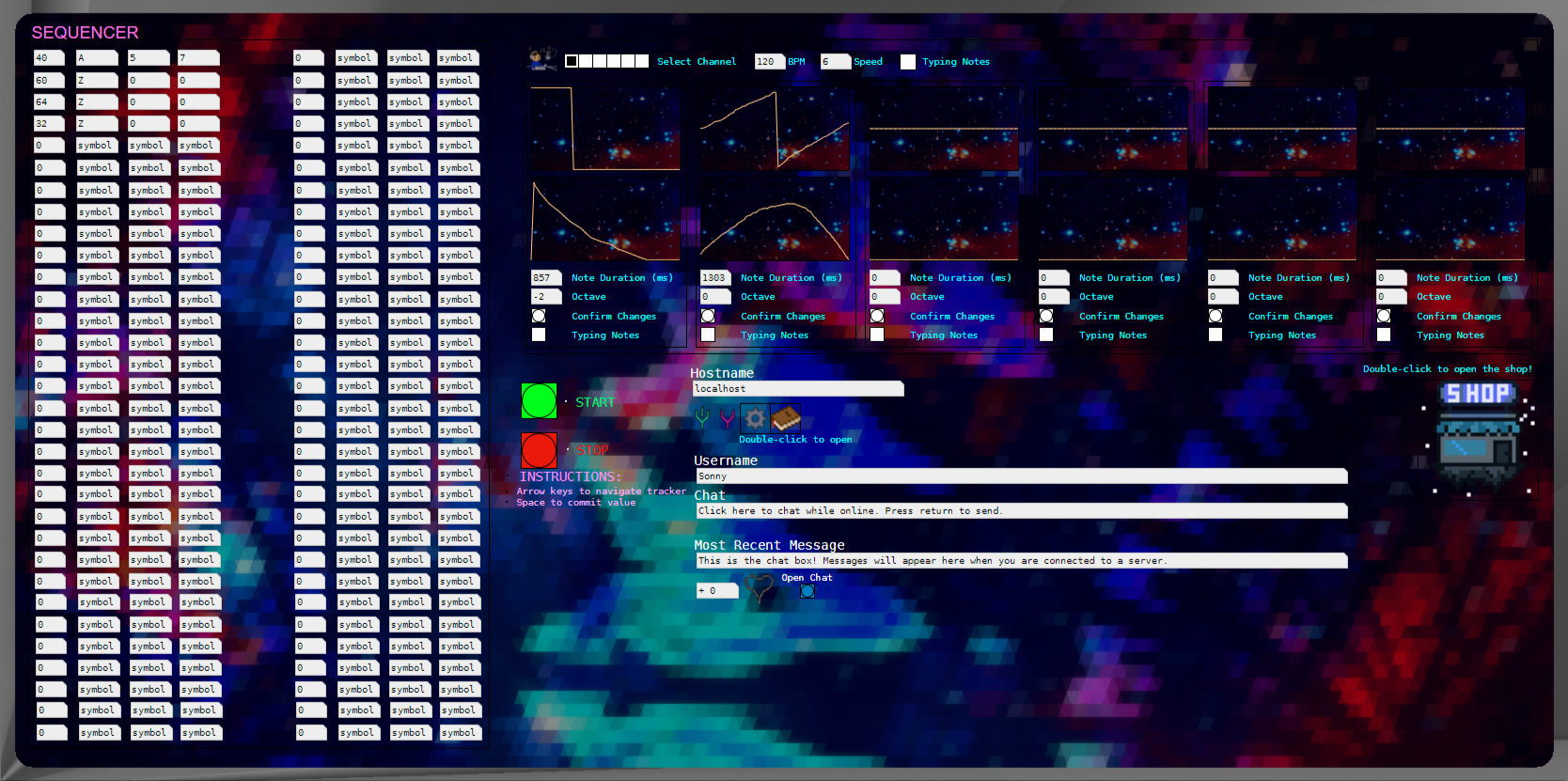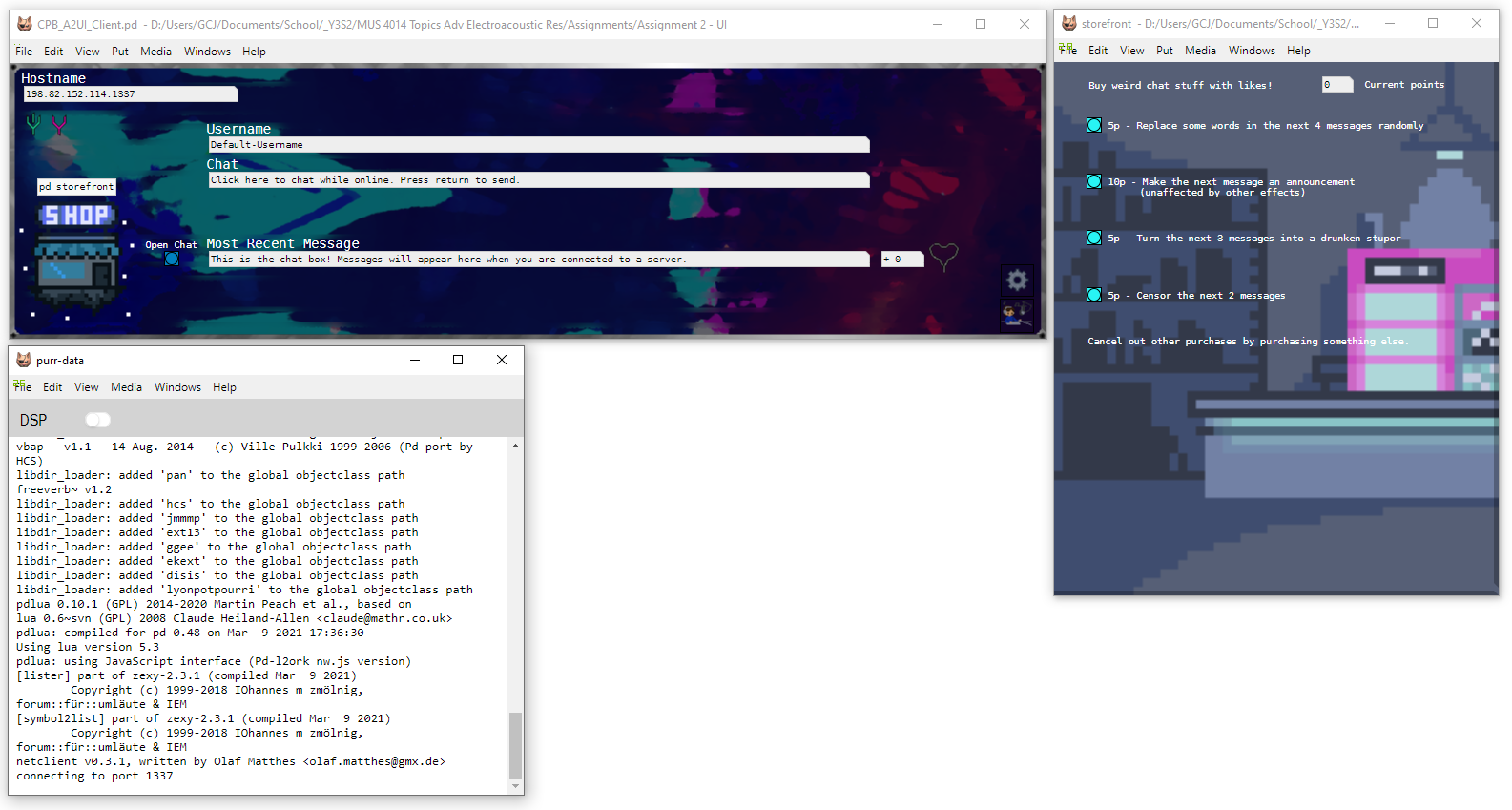ABOUT
The DSL (Demoscene Sequencing Looper) is a tracker produced by the music duo DSL (Demand Space Love). This tracker was designed for their Advanced Electroacoustic Research class and is written in the visual programming language known as Pure Data: to be more specific, the Pd-L2Ork distribution of Pure Data.
While based on popular trackers such as MilkyTracker and Renoise, the DSL tracker differs in a few key ways. The first and biggest difference between the DSL tracker and the rest of the trackers is the fact that it is collaborative. One person sets upthe server on their computer via a premade patch, and the rest of the participants can join via that person's Ipaddress and port number. While normally, a realtime audio collaboration would be rendered difficult or impossible due to latency, in this case latency is a non-issue, since trackers are quantized.
The DSL tracker is aesthetically space-themed, with color palettes and visual assets that tie the look together. Sonically, it uses built-in unit generators, as well as built-in wavetables, to produce audio.
Overall, the DSL tracker is an exploration into what trackers could be in the future, and how their unique capabilities lend themselves to realtime collaboration over distance.
CURRENT VERSION

DOCUMENTATION
Early designs and ideas for the tracker included much more traditional tracker aspects than were feasible for the narrowed scope of the release version. For example:
- In Rezo's original design, the GUI would have allowed a single user to manipulate multiple instruments and tracks at once, whereas the release version of the tracker ended upallowing each user to only manipulate one track at a time.
- In Sonny's original plan, there would have been copious amounts of keybinds to streamline the tracker workflow, similar to how modern as well as retro trackers operated.

Above is the image of the original version which only supported basic chat functionality. This design was built entirely off of work that Sonny had done previously for the class. At this stage, Rezo's work was still being developed in a separate file.
This is a video of early integration of Rezo and Sonny's work, as demonstrated by the ability to navigate the tracker using the arrow keys, and experimentation with CSS features.

An image of an early test version of the tracker. The sequencer was only five rows long at this point.
INTERNAL WORKINGS

The internals of the sequencer were quite messy to implement. Because each individual number box required a connection to numerous objects for the arrow key navigation, message sending, and gating, thousands of connections were done by hand by both Sonny and Rezo.
There were layers of patches to Sonny's work, as demonstrated by the numerous amount of subpatches within this subpatch.


The internals of the wavetable synthesizer required a fair amount of complexity, in order to use the drawn-in graphs as envelopes and waves, and in order to use effects.